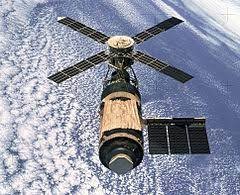Houston, June 7 – In a daring and arduous spacewalk, two courageous astronauts aboard the Skylab space station successfully managed to open a jammed solar electric generating wing, providing a much-needed solution to the power crisis that had plagued the station. The historic achievement not only resolved the immediate predicament but also promised to extend the productive lifespan of America’s pioneering space outpost.
Commander Charles Conrad, leading the mission, announced with relief, “We got the wing out locked,” following an intense struggle that lasted over two hours outside the massive research station. The mission control center in Houston erupted with jubilation as the news spread that the sleek solar cells adorning the 30-foot panel were effectively harnessing the sun’s energy, converting it into much-needed electricity.
Both Conrad and his fellow astronaut, Joseph P. Kerwin, conveyed that although the wings were not fully deployed, they were partially folded, resembling the shape of a half-opened accordion. While the situation was not ideal, the fact that the solar cells were operational boded well for Skylab’s power supply and its mission objectives.
Skylab, America’s first space station, had been facing a critical power crisis, threatening to undermine its capacity for scientific research and jeopardizing the well-being of the astronauts stationed aboard. The malfunctioning solar electric generating wing had severely hampered the station’s ability to harness solar energy, which was crucial for its power requirements. The entire Skylab program, which aimed to advance scientific understanding in space, had been hanging in the balance.
The dramatic spacewalk undertaken by Conrad and Kerwin exemplified their unwavering dedication to the mission’s success. Equipped with cutting-edge space suits and meticulously planned procedures, the two astronauts ventured outside the relative safety of the space station into the harsh vacuum of space. With Earth floating far below them, they confronted the formidable challenge of unlocking and deploying the jammed solar wing.
Working in tandem, the astronauts employed their specialized tools and training to carefully release the solar wing from its entanglement. The precarious nature of the operation necessitated immense concentration and physical exertion in the unforgiving environment. As the minutes ticked by, their determination never wavered, reflecting the indomitable spirit of human exploration and problem-solving.
Back on Earth, the team at Mission Control monitored the astronauts’ progress with bated breath. The successful conversion of sunlight into electricity marked a significant milestone, alleviating the immediate power crisis and providing a renewed sense of optimism for the Skylab mission. The scientific community and the public at large eagerly awaited the wealth of knowledge and discoveries that would now be made possible.
The significance of this breakthrough extended beyond the confines of Skylab itself. The successful resolution of the power crisis showcased the resilience and resourcefulness of NASA and its astronauts, affirming America’s continued commitment to space exploration and technological advancement. The restoration of the space station’s power capabilities ensured the continuation of vital experiments, medical research, and other groundbreaking investigations that would shape humanity’s understanding of space and its potential applications.
As the spacewalk drew to a close, Conrad and Kerwin made their way back inside the Skylab, their helmets reflecting the awe-inspiring sight of our planet suspended in the vastness of space. The successful deployment of the solar wing had not only saved the mission but had also exemplified the ingenuity and bravery of those who dared to venture beyond our planet’s boundaries.
With power restored, Skylab’s potential for scientific discovery soared once again. The heroic efforts of Conrad, Kerwin, and the dedicated teams on the ground had ensured that America’s first space station would continue to push the boundaries of human knowledge, leaving an indelible mark on the annals of space exploration.


